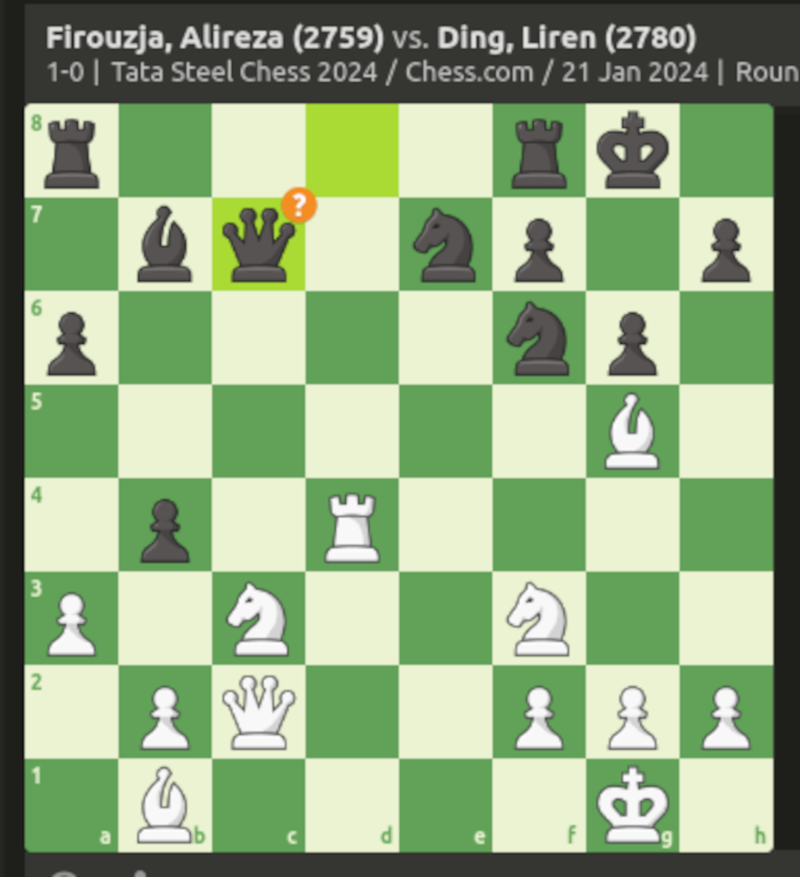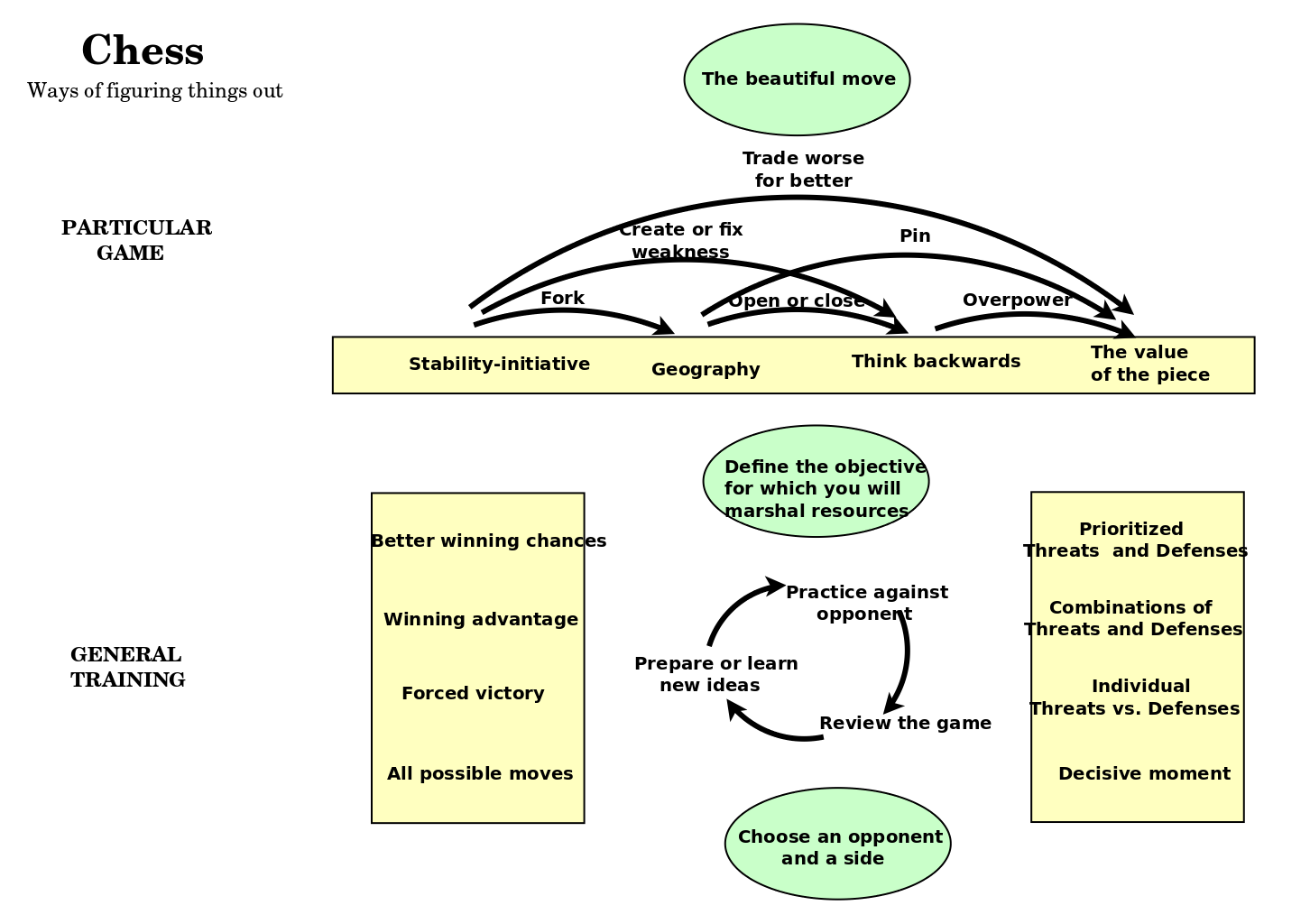Jere Northrop and Andrius Kulikauskas lead this Math 4 Wisdom study group
More Links
Andrius Kulikauskas: I am studying examples from chess to understand chess as a language of argumentation by which issues come to matter, a language of verbalization by which concepts gain meaning, and a language of narration by which events happen. Note that chess is a finite activity, yet people are able to invest many hours into it, and in some case, the best energies in their entire lives. They invest themselves into chess just as we invest ourselves in language.
Chess
Data Sources
 Hikaru Nakamura Commentary on his own games by one of the most expressive people in the world.
Hikaru Nakamura Commentary on his own games by one of the most expressive people in the world.
- Bobby Fischer. My 60 Memorable Games. A classic. Available online.
- Edmundas Kulikauskas chess games My father!
- Aron Nimzowitsch. My System
- Games of powerful chess computers.
Considering the context
The significance of a game will determine our considerations and our analysis. Are we playing for a win or for a draw? In an Armaggedon game, White must win and a draw counts as a victory for Black. Or perhaps we are playing against a loved one who we prefer to lose to.
Do we have anything at stake? Are we playing for rating points? Are we just playing for fun? Are we playing on a team? Is a win the only result that would matter? Or perhaps it no longer matters what result we get?
What is the time control? Are we short on time? Is our opponent?
What do we know about our opponent? Are they stronger or weaker than us? Do we have any emotions towards them? Are they a friend or a foe? Do we want to humiliate them, crush them? How do we imagine victory?
Why are we playing? To learn? To try out something new, perhaps a new opening? What have we been studying?
Is our game being recorded? Are others watching? Who cares about our game? Who will know about it?
All such questions describe the big picture, which is the initial context and the final context that frame our entering into the details of the game. In chess, much is assumed and much may be irrelevant but ultimately everything is understood in the big picture. This sets up the sporting aspect and also the historical aspect.
Principles of play
Are we resolved to play objectively, without regard for our oponnent?
Are we mindful of our own strengths and weaknesses? And those of our opponent? Are we working to improve, thus perhaps playing counter to our natural style?
Analyzing a position
It is White's move in the position. Black (the World Champion) has just played ...Qc7, which is a mistake. I want to analyze what comes to mind for me in this position. What issues come to matter? What meaning arises?
What matters
- I am down the exchange - I have sacrificed it for activity. I realized this later in my analysis and this changed everything!
- My knight on c3 is attacked by the pawn. This is worrisome. Whereas the pawn also attacks the pawn on a3 but that matters little because it is much less significant, is a piece of equal value and is defended.
- His knight on f6 is hanging and I can take it with my bishop.
- My battery of queen and bishop could possibly checkmate him at h7. But he has defended by pushing his pawn to g6 and so he seems to have dealt with this threat.
- If he were to move his queen to c6 then with the help of his bishop at b7 he could possibly mate me at g2.
- If his knight jumped to g4, then he would be threatening with his queen to attack my king at h2. My knight at f3 is defending but he could eliminate it by taking with his bishop. Furthermore, his bishop could take the knight even now and double my pawns, making my king vulnerable - though it is not clear how he could attack it - but I myself would not be able to use the open g-file because his pawn is sturdy at g6. However, the doubled pawns would be a significant weakness going into an endgame.
- Overall, the main question at this point seems to be how I could spare my knight at c3 and win his knight at f6. But I am down the exchange. I can't simply trade pieces!
- Or how can I exchange these pieces in a way that advance my pieces in ways that give me a meaningful advantage, maintain the initiative?
- I don't see how to crack his kingside. It seems solid.
- If I move my knight at c3, then he can exchange queens, which would take us out of the middle game and winning chances. However, my queen is protected by my bishop at b1.
- His knight at e7 seems vulnerable because it is only defended by his queen and his knight at f6 could get in the way.
- If I take his knight and he takes my knight, then I will win his pawn - and be a pawn up - but it will be an isolated pawn that he can attack. Which is perhaps why he moved his queen to c7. And I will only have that one pawn for the exchange!
- What I am missing (and what the world champion missed) is that his queen is undefended. Which rarely would be a problem except in a rare case like this where Firouzja, as White, played Ne4, attacking the knight at f6 but also opening up White's queen to attack Black's queen. Black can exchange queens. But then White takes the knight with check - an intermezzo move - and only then picks up the queen. So White now has two pieces for the rook. And White's pieces are very active. So Black is lost.
Relate to the Ways of Figuring Things Out in Chess
See: ChessDiscovery
How are the concepts below relevant in how things come to matter and how meaning arises?
Questions
In chess, how do we distribute mental resources, to win right away (with a combination - closed ended) or to care about the situation in the long run (improving our position - open ended)? This may be the key distinction for the three minds, how do things come to matter.



